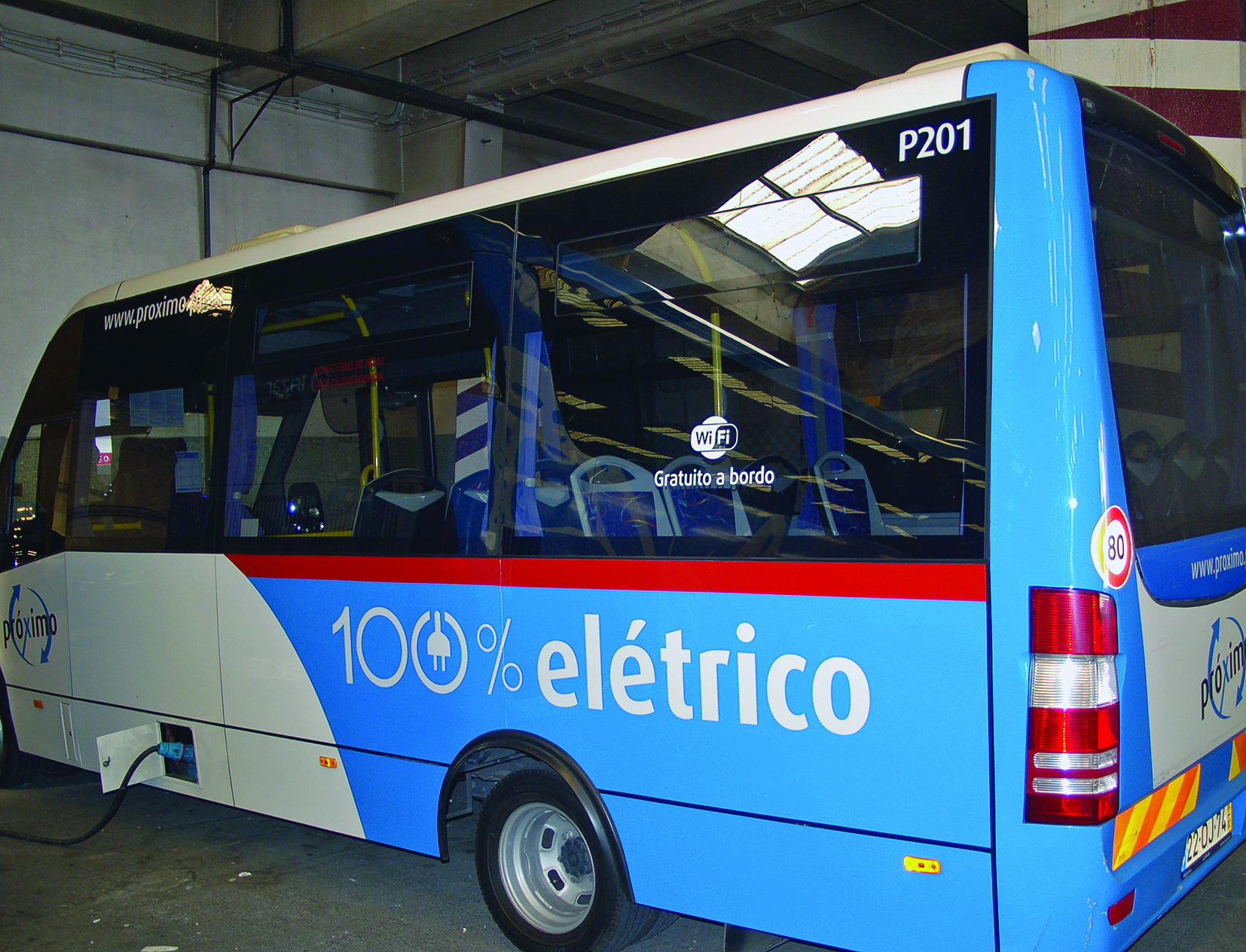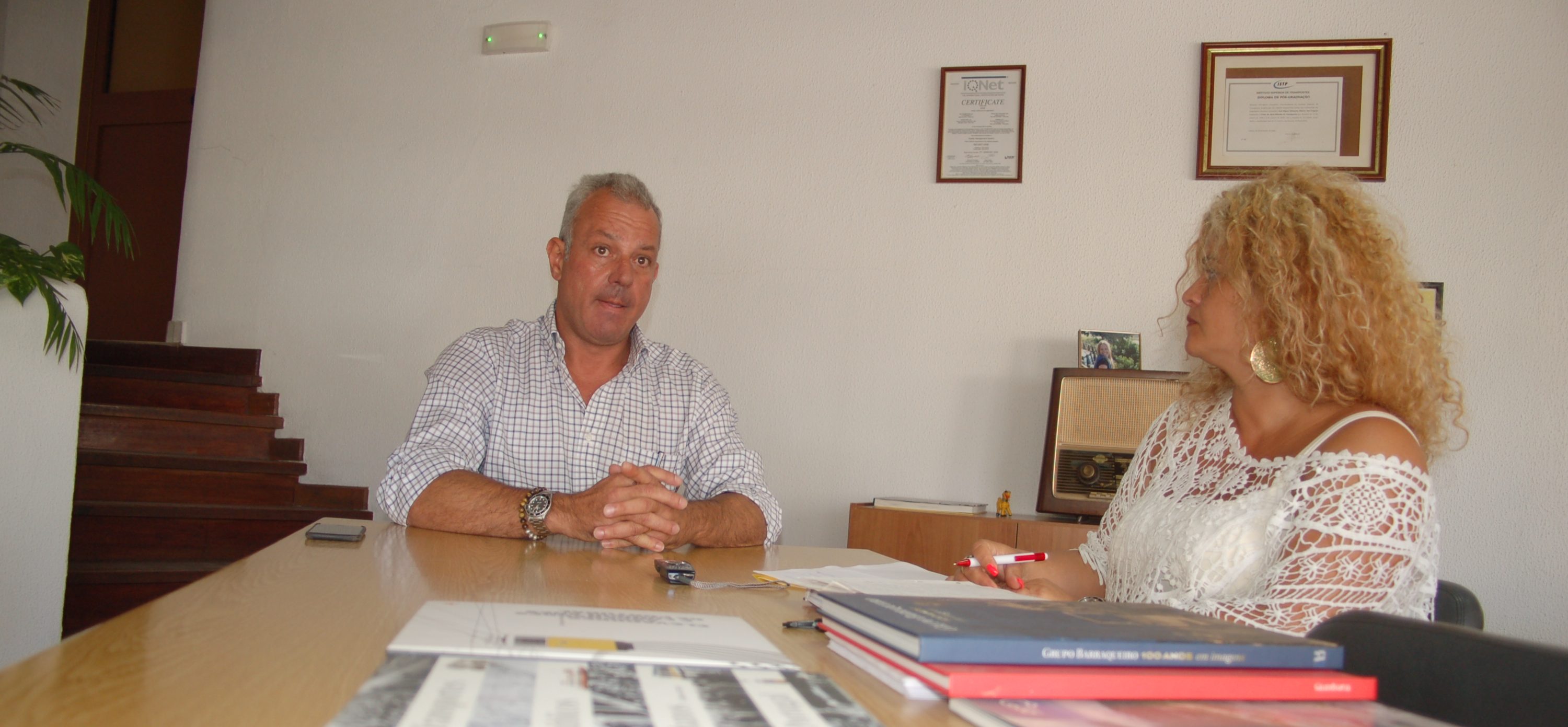At a time when directives are increasingly calling for the use of environmentally-friendly energies, how many electric vehicles does Eva have?
Just one. Our investments in the fleet haven’t – yet – been made in electric vehicles or ones fuelled by natural gas, for two reasons: the possibility of investing in environmental measures announced by the government was limited to public or semi-public transport companies: Carris, STCP, Transportes Coletivos do Barreiro… and the National Association of Heavy Road Passenger Transport Operators (ANTROP), which represents us, promptly published a letter setting out our position…
And, when it comes to buses used for public transport, the autonomy of electric vehicles hasn’t improved much. For the type of service that we provide in the Algarve – which is substantially different from those provided in other areas of the country – this question is crucial. In my capacity as an operator, I need a bus that can be in use the greatest number of hours possible.
With the constant stopping and starting resulting from traffic jams and the seasonal nature of the service, coupled with additional problems such as air conditioning and electric doors, we would need vehicles that could operate autonomously for up to seven hours.

But you spend huge amounts on diesel fuel…
You’re quite right. We have 600 buses in operation – tourism, express services, public transport – with an average consumption of 26 litres per 100 kilometres, doing nine million kilometres per year.
However, we have succeeded in reducing specific consumption (litres per 100 kilometres), thanks to the type of vehicles we use, and the training we give to our staff. Some years, consumption is around 32, 33/100, and, at this moment, we have recorded a difference of seven, eight litres, which, in ten years (and given the reduction in the fleet) is quite substantial.
In what is a completely private company, invest-
ments are managed right down to the last cent and the questions of electricity and gas which for me are important – continue to be essentially financial ones. But the best, and the cleanest, form of energy would, in fact, be the hydrogen battery.
Why don’t we start investing in our own energy – by walking? Are there any measures planned for closing urban centres to motor traffic in the Algarve?
Not that I know of. Based on studies carried out by the Algarve Municipalities Association (AMAL) – the Intermunicipal Community of the Algarve and by the University of the Algarve, zones are being created that give special privilege to pedestrians, such as the ones in Silves, Loulé and Portimão. Personally, I’m in agreement with this idea. I consider it very important for people to get the feel of a city on foot.
How do you normally travel around?
By car, but I also walk a lot and enjoy it.
And you never take a bus?
Sometimes I take a bus, but it’s not my normal way of getting around.
Why is that?
Because my professional life means I never stay in just one place and there’s no means of public transport that’s adapted to my personal needs.
In your opinion, why do people in Portugal tend to give so much privilege to travelling by car?
Such behaviour is not exclusive to Portugal. You can see it all across Europe. We are belatedly living the so-called American Dream. In Portugal, we have roughly 1.8 vehicles per family. Besides the status it confers, having a car is much easier than it was ten or twelve years ago. Coupled with the lengthy planning required at the level of public transport and the exponential growth in terms of the dynamics of cities, where mobility requirements differ from one year to the next (today’s truth is tomorrow’s lie in terms of transport needs), this greater ease of car ownership means that it is fundamental to interact as closely as possible with all the pawns on the chessboard.
Why don’t you think about a public transport system that includes two-wheeled vehicles?
There have already been some experiments in the Algarve: shared bicycles in Portimão, Vilamoura and Tavira; central hubs that you operate with a card.
But are these co-ordinated with the public transport system?
They’re located in places close to the public transport stops, yes. The link between the two doesn’t yet exist in a structured fashion, however. These are relatively recent things. Although this modal interconnection is fundamental for the future.
There are some disparities between urban public transport and the rest…
The answer here may lie with the local authorities. In the Algarve, there aren’t any associations dealing with this matter, but in other areas of the country, the local councils are associated with transport companies and guarantee their customers the transport they need “on demand”, at the times and with the destinations they want.
Why not form an association of companies or even local councils to create common measures?
In the future, it will be fundamental to create networks. Eva is always open to this possibility. The councils already work very closely with us on the transport of their citizens up to the boundaries of their borough. We’re not just talking about urban transport. AMAL is responsible for the management of interurban transport, beyond the limits of each borough and between boroughs.
In recent years, local authorities have made a great investment in buses – many of them now have quite substantial fleets – but I haven’t yet seen any councils in the Algarve buying any environmentally-friendly vehicles. The only electric bus in the region belongs to a private company.

What would be needed to make clean energies more attractive?
First of all, the existence of a very objective policy, one based on continuity, and not one composed of badly thought out measures that are operational today, but which no longer function tomorrow.
In the case of electric vehicles, for example, charging points have been created along the motorways, but, after making the fundamental calculations for a viable circulation of these vehicles, people are surprised by a whole series of problems. Then there’s all the university knowledge relating to the question of autonomy. Autonomy is an Achilles heel in the case of electric mobility.
With the reduction in the weight and size of lithium batteries, we can give a further impetus to the demand for more environmentally-friendly alternative transport. The future will be based on the use of clean energies, with a more concerted environmental policy.
So, zero emissions of CO2 aren’t a target for Eva Transportes in the next few years?
No. That would be Utopian, despite its being desirable.
Utopias create new realities…
That’s often the case… Reducing CO2 emissions has, however, been a priority for a long time: through investment, monitoring fuel consumption, a more concerted use of air conditioning… we have been doing our bit. Obviously we have much broader objectives.
All the urban transport services in the Algarve use relatively new buses, given the average age of the rest of the fleet. The vast majority of vehicles already comply with the Euro 6 emission standard.
What improvements have been made since 2015?
I would like to have seen many more changes. The constant delays, the road works, the interruptions to traffic and the traffic all forced to travel in one direction in an activity such as ours increasingly discourages people from using public transport.
The road works on the EN 125 have dragged on with occasional breaks now and then and have seriously complicated our activity, since the Algarve doesn’t have a single metre reserved just for public transport, although a series of measures are systematically being introduced to improve the use of public transport.
Have there been any improvements at all?
Yes, today the traffic flows better, with the creation of roundabouts and the reduction in the number of crossroads. It’s still too early to make any predictions, but the average speed has improved.
The ideal solution would be to build more roads…
The ideal thing would be to have made plans to cater for questions of mobility. The transport network in the Algarve is like a lot of capillaries. The connections are made between the most important cities. Anyone who travels on the EN125 knows how hard it is to use this road in the summer months, between Albufeira and Faro, for example.
The Via do Infante isn’t an alternative. It’s true that we have created more direct services, most notably the “transrápido” when they started charging tolls, for example. Our aim was to encourage some people to use these concrete services, but everything ends up being funnelled into the EN125.
Without a special lane reserved for public transport or priority vehicles, together with the added problem of the many stops that we have to make along the bus routes, especially in the summer season, it’s extremely complicated sticking to the timetables. It’s almost humanly impossible.
And then we have another problem: the buses stop running very early… There aren’t any buses after 8 pm, isn’t that right?
Yes, we stop at around 8 pm.
There aren’t any night services…
There are some night services, at the level of the separate boroughs, especially in the summer. They’re operated with vehicles and staff from Eva, but the service, the fares and the routes are all established by the local council.
When you arrive at the airport, what alternatives are there?
In terms of public transport, we have had two situations since 2015: we created a stop at the airport that makes the connection between Seville and Lagos three times a day. Since June, this has enabled passengers to get off at Olhão, Tavira, Portimão, Albufeira, Isla Canela or Isla Cristina.
The “Próximo” makes the link between the airport and Faro. This is the result of a partnership between Eva and the local council, and it runs every 15 minutes, under ideal traffic conditions.
What changes would you like to see being brought in before 2020?
I’d really like to see the completion of the mobility study that AMAL’s been making since January 2016, and to see the integrated urban and interurban transport system fully implemented and running smoothly with a simplified ticket system, so that you can use the same card on different types of transport and in different boroughs.
Another important point is to improve the spread of information. AMAL is developing an app for mobile phones that will make it possible to detect where customers are and to let them know the full range of transport options available from that place.
And in October this year, we’ll be starting work on redeveloping our terminal, in the area where we attend to the public, and rebuilding the roof of the whole structure. We’ll be investing in solar panels all over the terminal.
What would your ideal public transport system be like in the future?
It would be a more ecological form of transport, one that’s more concerned with its image and the frequency of its services, and which wouldn’t oblige passengers to be constantly looking at their watches. It would have a common ticket system with interurban transport, and a fair price in relation to the service supplied.
Thank you.
 Eco123 Revista da Economia e Ecologia
Eco123 Revista da Economia e Ecologia

